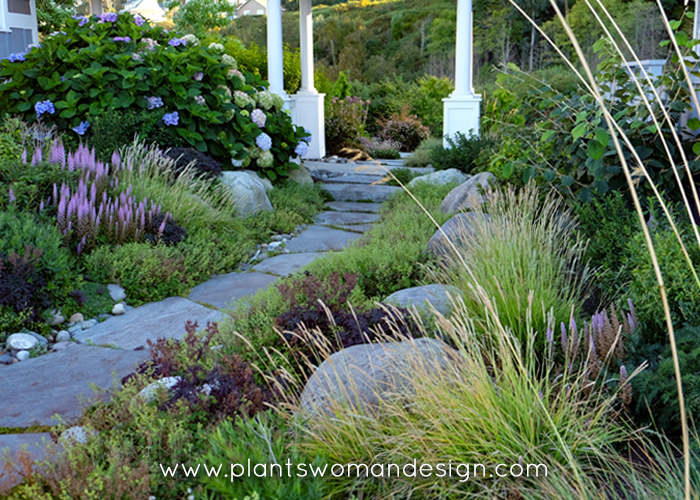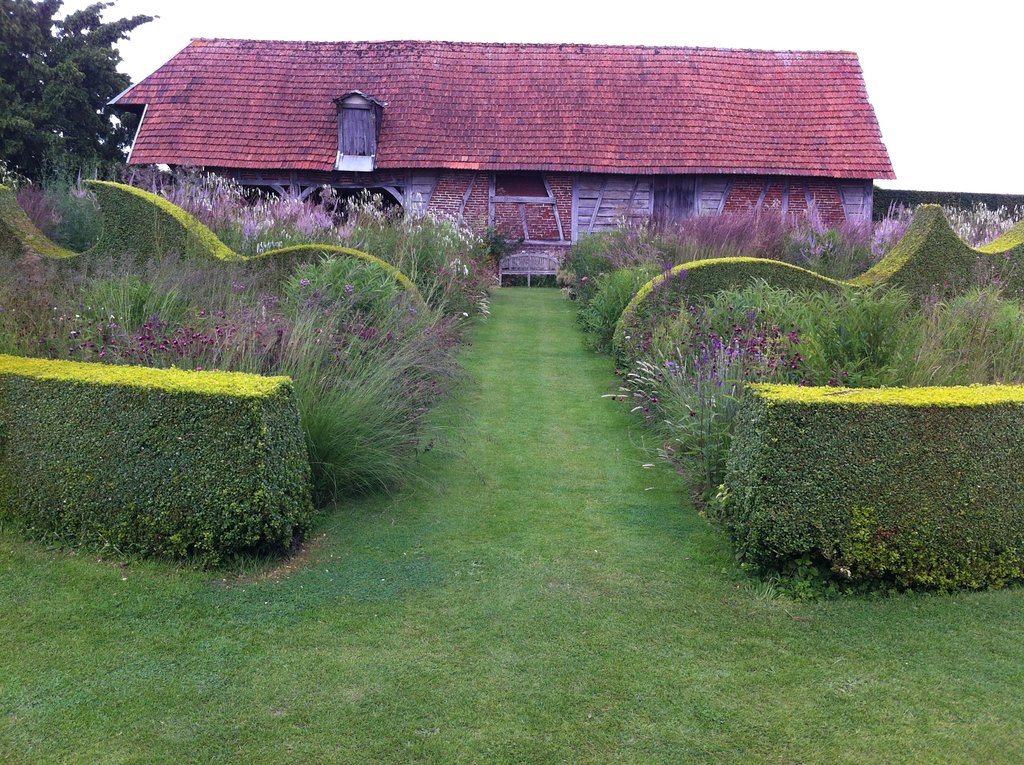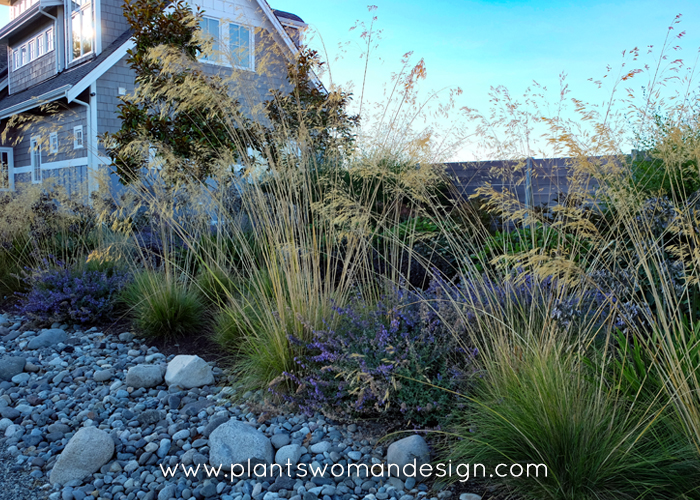
Wispy, Wild, Wonderful Grasses









Autumn is a time when everything starts to die back. The fun fluffy perennials, crazy growing annuals and lush trees change and start to go dormant. One of the best things about grasses is they begin to really put on a show. As they enter fall they look the best of their entire season of interest. The wonderful greens and infloresenses blend into a mixed bed but when the cool weather hits the other plants bow out and the grasses take center stage.
 Many people have a love/hate relationship with grasses. Some designers think they should only be used in full sweeps relegated to grass gardens and not integrated into garden beds. Others think they can be used in any situation and can translate into any style. I do like to use grasses in many situations but not in every situation. Most grasses are happy in full sun and bright areas with long vistas to view them at a distance. There are also lovely shade grasses available, usually showing up as bright spots in a dark area.
Many people have a love/hate relationship with grasses. Some designers think they should only be used in full sweeps relegated to grass gardens and not integrated into garden beds. Others think they can be used in any situation and can translate into any style. I do like to use grasses in many situations but not in every situation. Most grasses are happy in full sun and bright areas with long vistas to view them at a distance. There are also lovely shade grasses available, usually showing up as bright spots in a dark area.
The scale of a grass can sometimes overwhelm their surroundings become the dominate feature. Using them where they are happy and can maintain their upright sunniness will reward the gardener. Note how the Hakonechloa is balanced with shrubs that can maintain their own space in the garden with this, sometimes aggressive, grass nearby.
I love working with texture in the garden. Leaf color and shapes add so much more interest than just flowers. One area I really like to use grasses is in a beach garden. The color of the light near the water and scope of vision is fun to play with. I also like to play the soft light grasses against hardscape. The summer brings contrast between sun warmed rock surface and cool lush grasses while the same area becomes contrasted between the now cool gray surface and warm autumn tinted grasses in the fall.
 Some of my favorite grasses are:
Some of my favorite grasses are:
Panicum virginitum ‘Shenandoah’ Sheanandoah switch grass – Grows to 3-4 feet hardy from zone 5 – 9, Interest from July to February. lovely green soft colors and brilliant red tips and yellow in the fall. Panicles are red tangling with orange bits held above foliage. Winter color is wheat color with seed heads persisting through the season. Good in any soil, loves good strong light.
Chionochloa Rubra – Red Tussock Grass – A drought tolerant evergreen grass with interest all year long. grows about 3 fee tall in my garden by about 4 feet spread. soft green in summer with color change to coppery wheat color in winter and back to green again. zone 7 – 9 grown in full sun with little water is when it looks the best!. Thin leaves and panicles dance in the slightest breeze.
A dwarf miscanthus called ‘Little Kitten’ is also a favorite. I love Miscanthus but it is often too big for a normal garden bed and they don’t typically mix well with other plants when they are 6- 8 ft tall and very dominate. This gem is 3-4 feet in height. Has the typical miscanthus inflorescence on top. They stay upright and turn a fabulous fall color with all the colors of fall on the same plant Full sun, any soil, good drainage and not too wet are its best conditions. Zone 5-9.
I usually leave the grasses up until the late winter or even spring. If we have a snow I will cut them back after they are laying over. Birds use the seeds and small animals will overwinter in the dry area beneath the leaves. I will leave you with a border from one of my beach gardens. This has a lovely mixture of perennials, sedums, grasses, and small shrubs for a border that looks great all year long.